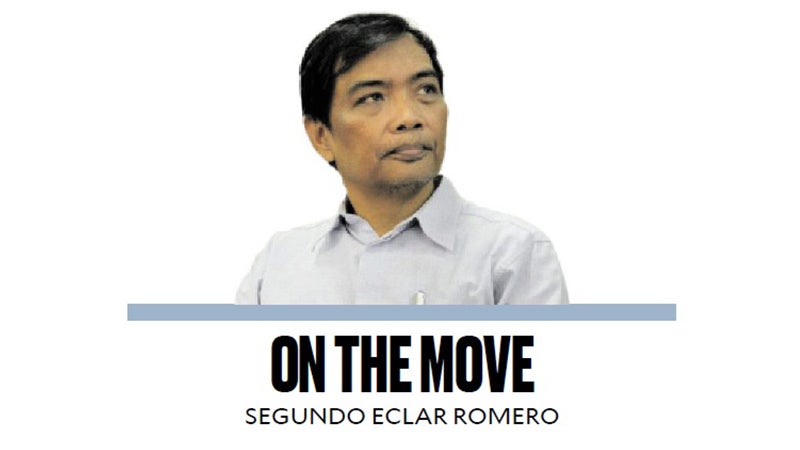PUV modernization: Trust-building failure

This extended jeepney strike is the third this year. It is almost painful to see the Land Transportation Franchising and Regulatory Board (LTFRB) muddle through the Public Utility Vehicle Modernization Program (PUVMP).
I cringed when I listened to LTFRB spokesperson Celine Pialago glowingly explain on a television talk show all the benefits of consolidation, from the subsidies, the regular salaries, the five-year franchise periods, etc. She ended with the offer of LTFRB that the jeepney drivers and operators, if only they sign a petition to consolidate, will be allowed to operate beyond the deadline of Dec. 31, 2024. This is like asking a woman who has not decided to marry you, to meantime wear your engagement ring. Asked how the LTFRB will proceed in light of the strike, she said that the agency will simply have to “educate” the drivers and operators a bit more.
The LTFRB declares on its website: “The PUVMP is not merely a vehicle modernization program. It is a comprehensive system reform that will entirely change the public land transportation industry.” Why then is LTFRB frontloading and focusing on the displacement of the traditional jeepneys by modern jeepneys ahead of other components?
A policy study by the CPBRD in 2020 has suggested that “the right sequencing of activities and programs in the implementation of the PUVMP is very critical. For instance, the program could have started with regulatory reform, local public transport route plan (LPTRP) formulation and submission, and route rationalization first before embarking on fleet modernization. This would give stakeholders a better appreciation of the program and an additional grace period for the operators and drivers to prepare.”
Indeed, there are 10 components to the PUVMP: (1) regulatory reform to produce the franchising guidelines; (2) the LGU LPTRP that defines the local routes; (3) route rationalization that matches routes to passenger demands; (4) fleet modernization to promote modern policies systemwide; (5) industry consolidation through transport cooperatives or corporations to systematize access to government credit facilities and subsidies; (6) financing PUV modernization by providing operators financial aid via government banks; (7) vehicle useful life program where old units are sold or scrapped at an appraised cost; (8) stakeholders support mechanism where training and livelihood support is provided by, e.g., Tesda and Department of Labor and Employment; (9) initial implementation where initial routes are approved while the LPTRPs and route studies are pending; (10) communications where true and correct information is disseminated to educate stakeholders on the program.
The Cooperative Development Authority has noted that jeepney driver-operator groups have not been included in technical working groups for the jeepney modernization program. Also, there is a huge backlog in the submission and approval of LPTRPs. As of Nov. 12, 2021, only 749 LGUs have submitted their plans. Of these, only 65 have been approved and given notices of compliance. So why pick on the jeepneys?
LTFRB is ill-equipped to successfully implement the program because it does not fully appreciate the situation of jeepney drivers and operators and the cultural significance of jeepneys in the Philippines. Thus, in February, the Senate adopted a resolution calling on the LTFRB to postpone the planned phase-out of the traditional jeepneys in order to resolve the valid and urgent concerns raised by affected operators and drivers regarding the program.
As the Dec. 31 deadline for the phase-out looms, the LTFRB still has to resolve the following concerns: (1) lack of meaningful consultation and participation that stokes feelings of disenfranchisement and frustration; (2) destabilizing impact on livelihood of jeepney drivers and operators; (3) financial burden of upgrading to modern standards; (4) financial models and loan programs not keyed to realities of the user experiences of drivers and operators; (5) inconsistent, unclear, regulatory framework and enforcement mechanisms; (6) potential long-term exclusion of marginalized drivers and operators in favor of larger, richer operators; (7) the lack of creativeness in achieving the modernization goals while preserving the historical and cultural presence of the jeepney in society; (8) the poorly sequenced, unsystematic, precipitate, and coercive implementation of the PUVMP; (9) the lingering lack of public buy-in into the larger PUVMP of which the jeepney is only a part; and (10) LTFRB strategy, systems, and structure that do not engender confidence it is commensurate to the task.
The LTFRB has yet to successfully resolve these concerns so it is premature to say the PUVMP is “nonnegotiable.” LTFRB has no time to do it right but will find time to do it over.
—————-doyromero@gmail.com

















